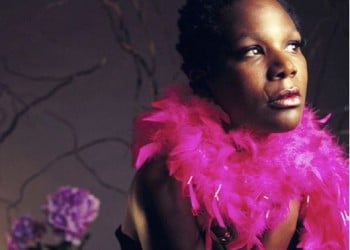But who is Nina Simone?
I get excited by the idea of a cabaret show that promises to teach me something about an artist. What a great way of getting up to speed with key influences on their art, and coming away with an understanding that will deepen my appreciation of their output. Fabulous Diva – The Music of Dr Nina Simone, mostly showed me that Ruth Rogers-Wright has a pleasant voice, and that pianist David Gassin and bassist Tom Lee have seemingly effortless mastery of the playlist.

From the Melbourne Cabaret Festival’s website:“Fabulous Diva – The Music of Dr Nina Simone features prose – anecdotes, quotes, biographical history and gossip that tells the story of Nina Simone. The tribute channels the energy and style of Nina Simone rather than parroting the voice of the late diva.” It is certainly a good decision to avoid giving an impression of Simone so that we can hear Rogers-Wright’s take on the songs. As for telling the story of Nina Simone, it is regrettable that Rogers-Wright’s show, originating from a performance in 2005, tends to give information through unsatisfying snippets. Examples here are manifest. “Dr Nina Simone” was mentioned several times, and yet no information was given as to when or where Simone earned her doctorate, or even what it was for. Why was it that Simone couldn’t be the first black concert pianist in the US? After relocating to Europe where “black and jazz were cool”, how was Simone “ripped-off”? Why did she habitually come to gigs late and drink heavily? What was it that made Simone decide to go to Liberia specifically, and then to flee and be “messed up” at the Montrose Jazz festival? We were told that Simone started with a gospel influence, but what else and who influenced her choices afterwards?
Some of Rogers-Wright’s story-telling elements are, at best, questionable. A tale of how Rogers-Wright saw Simone crying after a gig in London but didn’t approach her is not exactly a Songs for Nobodies moment. A curious song ruminating on Simone sitting in heaven by the telephone, with nothing on the television, wasn’t how I imagined the afterlife for a Diva, and required special effort to stifle laughter.
Nina Simone had her first hit in 1959. Recording in a range of styles, she is not fodder for commercial radio, and like classical music, may be invisible to a large proportion of younger generations. A tribute concert such as this gives Simone’s music to people already familiar with it, but doesn’t give a new audience much appreciation for the evolution of an exotic talent. The show’s limitations are particularly strange given a coincidental hearing of Rogers-Wright’s “Billy Holiday” on the radio the day after the performance; Holiday’s life was illustrated more in a few minutes than Simone’s was in much of this tribute. Rogers-Wright has the talent to play a role in keeping Nina Simone’s music alive, and some reworking of the show’s script will not only put Simone’s achievements in context, it will make for more involving cabaret.
